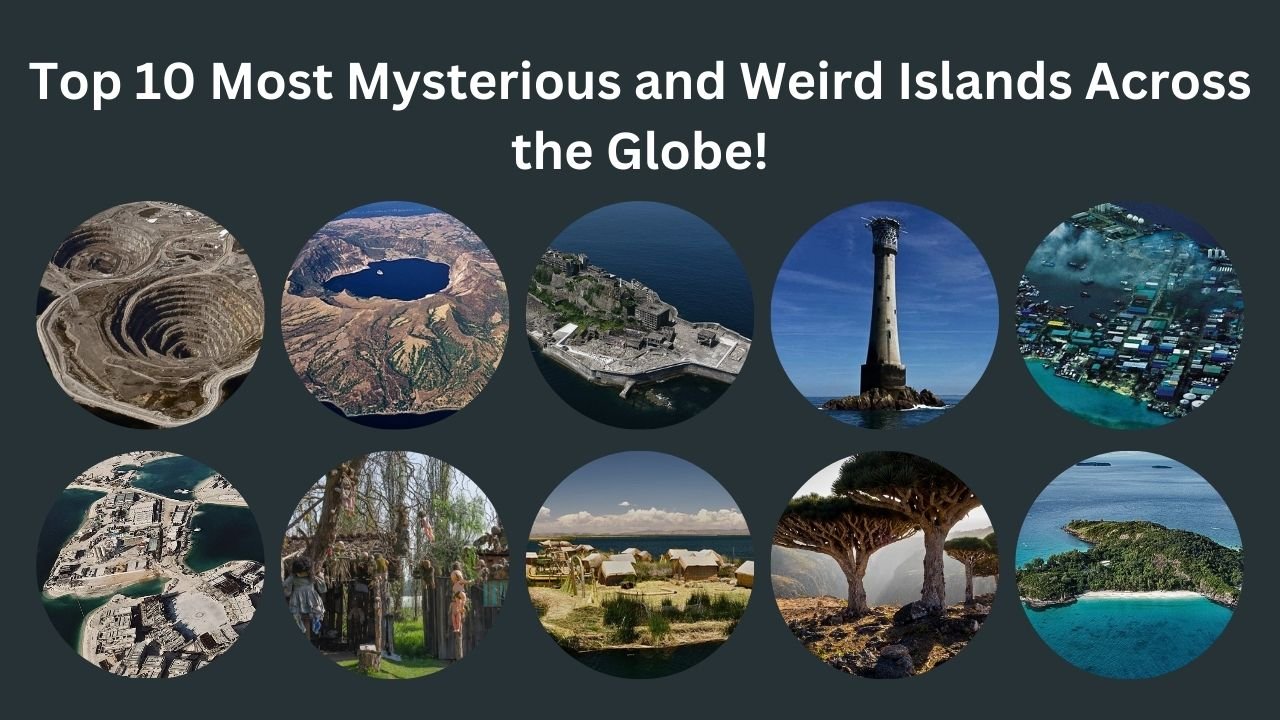Mother Nature gone wild these islands don’t seem real. Discover the wonders of our planet with the “10 Most Mysterious and Weird Islands on Earth.” From weird landscapes to unique wildlife, these islands hold secrets and surprises that capture the imagination.
If you want us to reveal these secrets. Then join us on a journey to uncover the secrets that make each of these islands truly fascinating and extraordinary.
Table of Contents
Here are the 10 Most Mysterious and Weird Islands on Earth
10: Diavik Diamond Mine in Canada
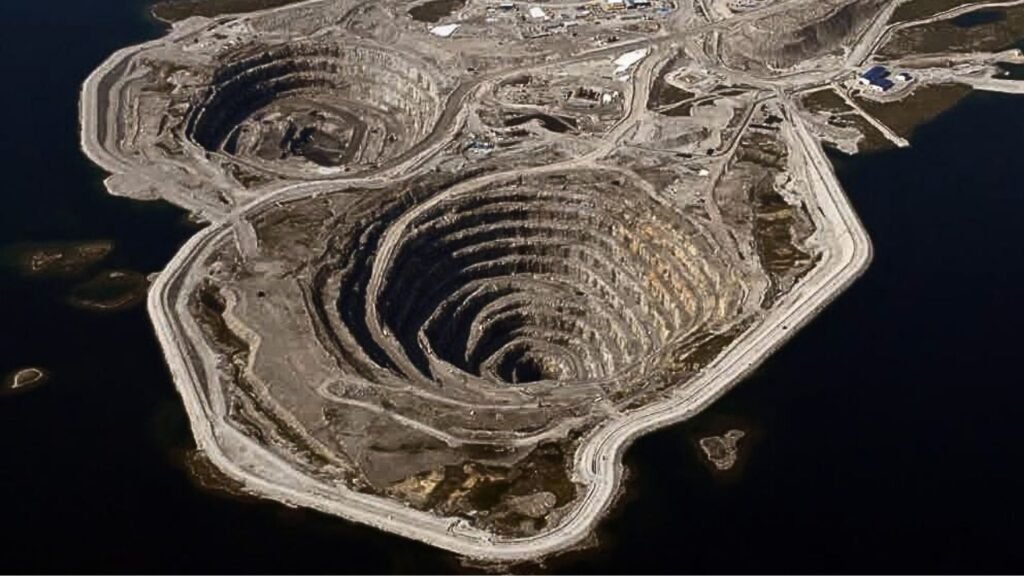
About 190 miles northeast of the Canadian city of Yellowknife in the Northwest Territories is the 7.7 square miles West Island, which until 2001 looked just like any other small outcrop of land in the region. It was found to be the site of a large deposit of diamonds; however, so in that year, the construction of the Diavik mine began and transformed the look of the island forever.
In addition to the striking open pit, the facility also has a processing plant, power plants, accommodation for workers, and even a small airport, which is necessary because it’s in such a remote region.
Since opening, the site has been responsible for producing around 7 million carats of diamonds each year, including a 552-carat yellow diamond that was found in 2018, and it’s the largest to have ever been discovered in North America.
09: Vulcan Point Island in the Philippines
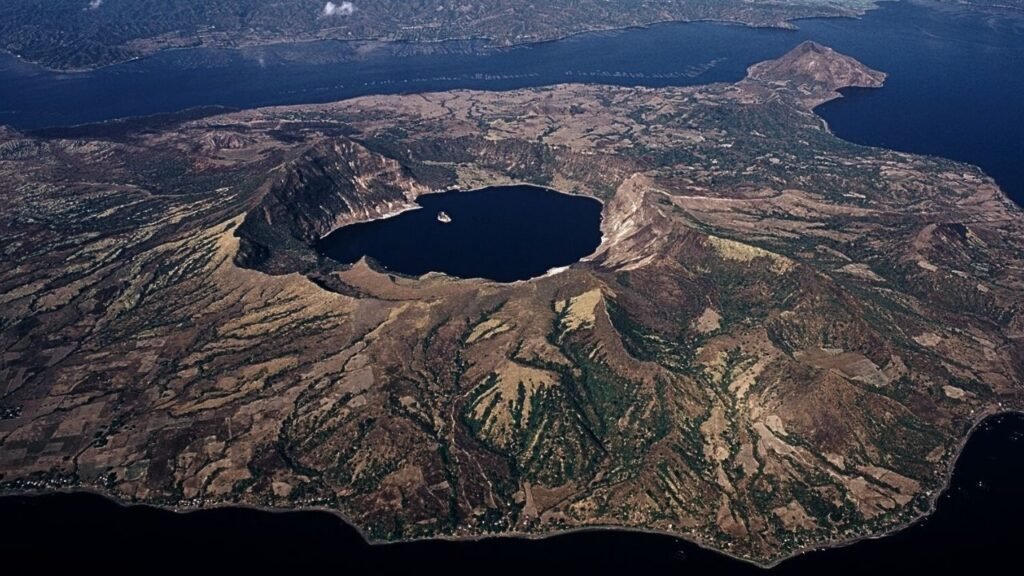
This unassuming small island is known as Vulcan Point, and it holds a series of records that mean it’s unlike any other island you’ll find elsewhere in the world. It’s the largest island that lies within the lake that’s on the summit of a volcano, which itself is within the lake that lies on an island, and as such, is known as a third-order island.
Despite its serene surroundings and popularity with tourists, it’s a place to approach with extreme caution, as the volcano that lies within is one of the most active volcanoes on earth and has been linked with thousands of deaths.
Vulcan Point is actually the remains of one of the volcano’s cones; the lake that surrounds it is the largest crater lake in the world. There’s always a chance another eruption is imminent; this island may not be around for much longer.
08: Hashima Island in Japan
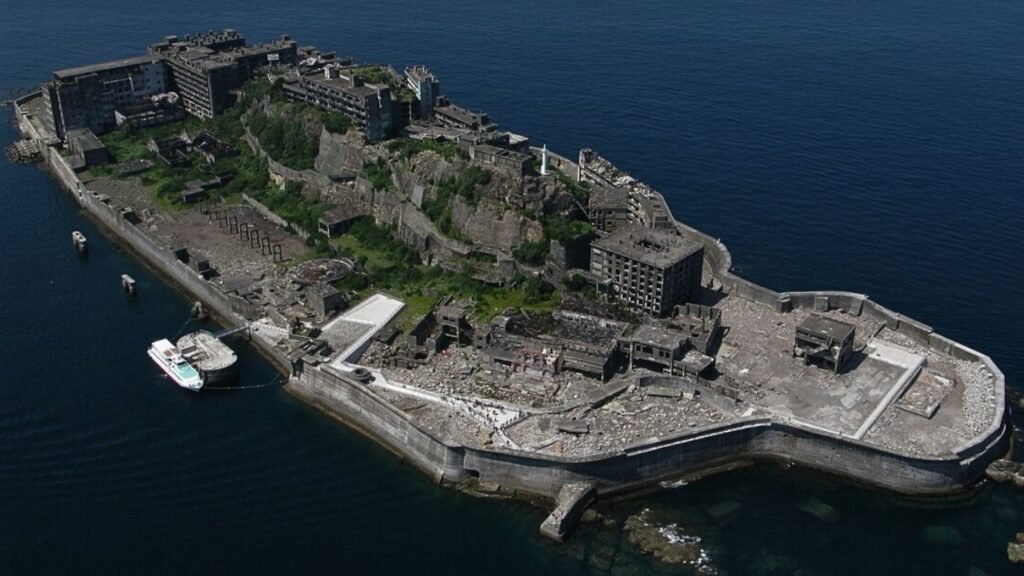
Hashima Island is now abandoned, but it was once the center of Japan’s Industrial Revolution. Found to sit above vast coal deposits, in 1887, it became the base of operations for a series of undersea mines. To support the works, seawall and land reclamation projects were undertaken, which tripled the size of the island.
Four main shafts were dug, one of which actually connects Hashima Island to one of its neighbors. At its peak, more than 5,000 people lived there in the concrete structures. By 1974, the coal reserves began to run out, and with no other reason to be there, the people soon moved away.
It was left as a historical monument that year-by-year has slowly been reclaimed by nature. Now, it’s protected as a UNESCO World Heritage Site and is often referred to as Battleship Island because of the way it now looks.
07: Bishop Rock Island in the United Kingdom
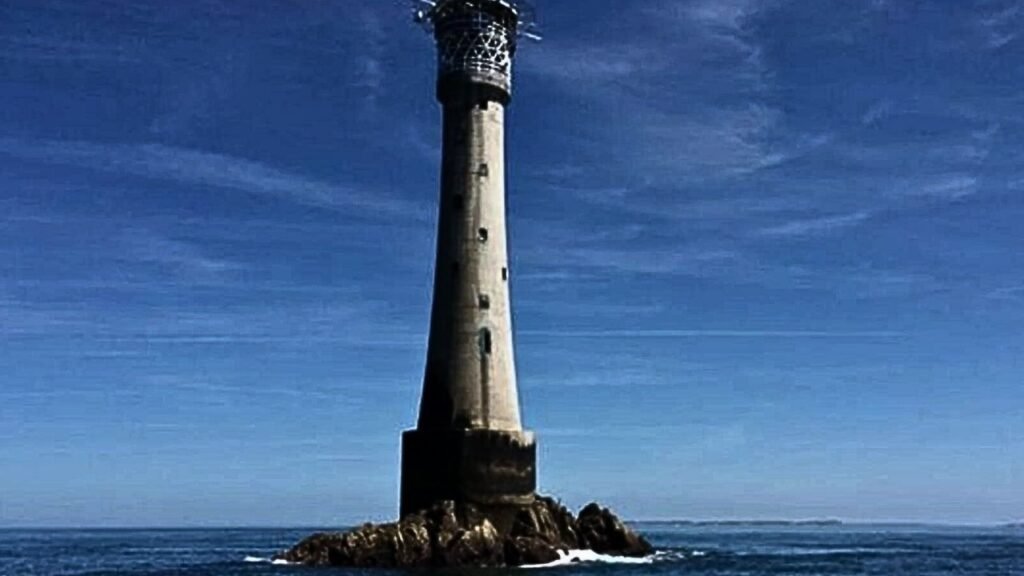
Bishop Rock is an eyelid on the westernmost part of the Isles of Scilly, which is an archipelago that lies 28 miles off the southwestern coast of Britain. To warn approaching ships, an iron White House was built on it in 1947, but it was washed away. So, a second one, which is the one that stands today, was constructed in 1858.
With no room around the structure, it used to be the case that anyone leaving the island would have to rappel from the lighthouse into a waiting boat, and upon arriving, they’d be lifted by a winch. In 1976, a helipad was added to make transport easier, and as of 1992, it’s fully automated, requiring only occasional maintenance visits.
Bishop Rock currently holds the world record for being the world’s smallest island with a building on it, and when you see how tight the fit is, you’ll wonder whether it will be possible for anywhere else to claim this honor.
06: Thilafushi Island in Maldives
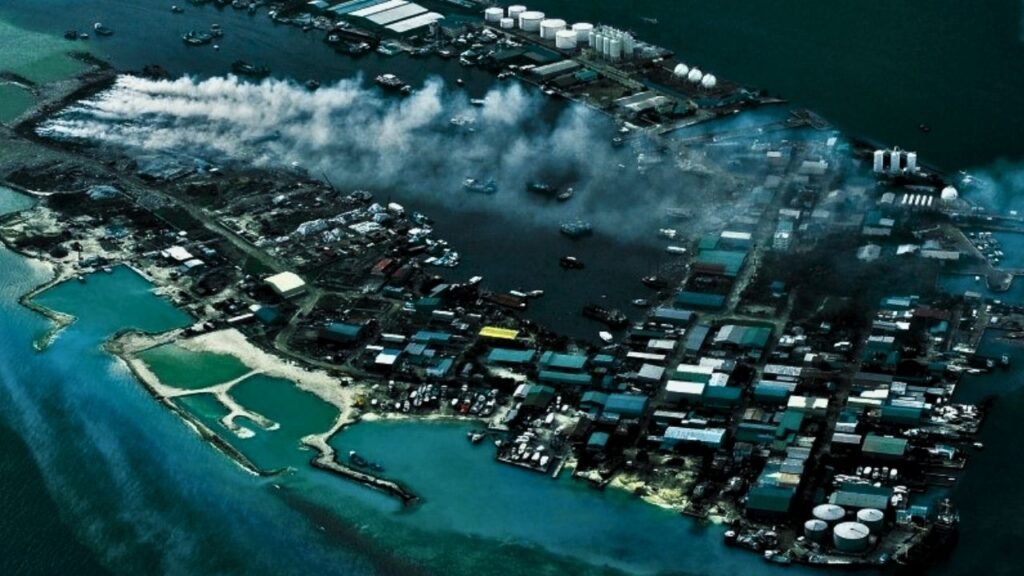
We hear so much about the amount of trash that’s produced every year, but did you know there’s an island that’s completely made of it called Villa Fucci? It’s in the Maldives and was created as a municipal landfill for all the waste that’s created by the tourism industry elsewhere. The first loads were deposited in late 1992, and now the island covers an area of 4.6 million square feet.
The waste is put in pits that have been dug into the shallow sea bed and then covered in industrial waste and a layer of white sand. It’s now become such a size that plots on the surface are rented by commercial operations, such as boat manufacturers, cement producers, and methane modelers, which means that this island that didn’t even exist 30 years ago now generates more than a million dollars per year.
Around 330 tons of trash are brought to the island per day, raising concerns about the long-term viability of Villa Fucci. Soon, it may be necessary to stop using it as a landfill, and efforts might be needed to remove everything that’s been deposited there before it pollutes the surrounding marine environment.
Read More: Weird Jobs That Pay Well
05: The World Island in Dubai

The World was a much-heralded artificial archipelago that was constructed two and a half miles off the coast of Dubai and designed to look like a map of Earth. At an estimated cost of around 10 billion dollars, there are 300 different islands, which are arranged into seven different continents and were formed from 386 million tonnes of rock and 321 million cubic meters of sand.
Despite its seeming like a great idea at the time, construction began in 2003 but was forced to halt during the financial crisis of 2008. While many of the islands were reserved in principle, there simply weren’t enough funds available to develop the intended buildings. To this day, only a few of them are in use. This means it’s a rather peculiar site of a series of sandy islands with an occasional one that has a structure on it.
There are now concerns that many of the islands are sinking back into the water, and it’s quite possible this will soon be remembered as one of the most expensive failed vanity projects that were ever undertaken.
04: The Dead Dolls Island in Mexico
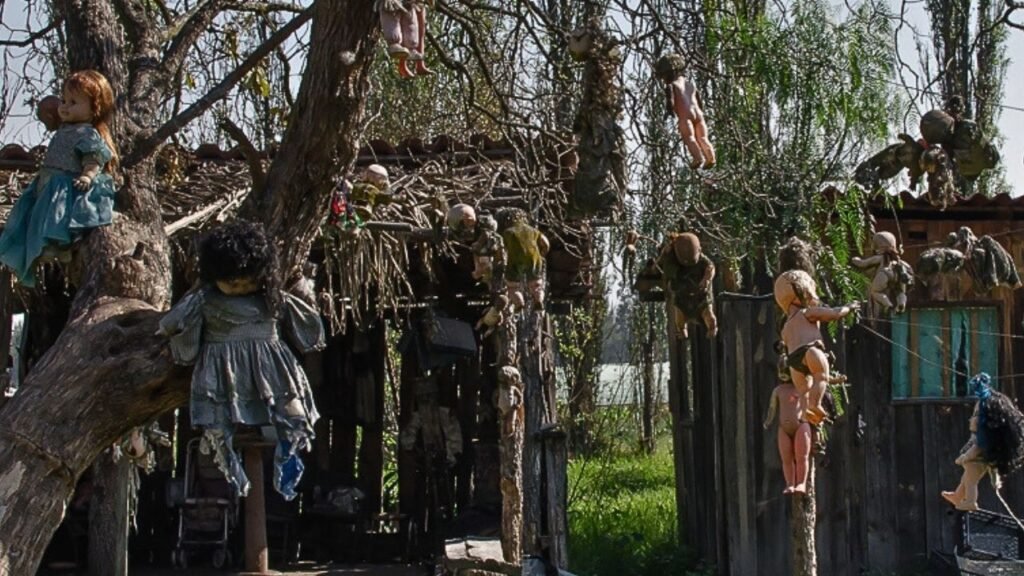
The Island of Dolls is probably the creepiest island in the world, thanks to a dark history that has led to several unusual trinkets being displayed in the trees and buildings. It’s to the south of Mexico City, in the waterways of Xochimilco, which was owned by Don Julian Santana in the 1950s.
According to legend, a young woman was visiting the island, and while swimming in the canal, she became entangled in the lilies and drowned. Her body was found on the banks of the island. Santana began experiencing supernatural events; he kept hearing a voice calling out for her dolls.
So, he began to collect dolls from garbage dumps that floated past in the water and hung them on the branches of the trees around where she was discovered. Over the next 50 years, he continued to do this, driven by fear that he was being haunted by her spirit. This resulted in hundreds of body parts and shrines being displayed across the island. He died in 2001, supposedly at the same site where the girl had died 50 years earlier.
Since then, the place has become a popular tourist destination. People visit with their own tributes for the island, and it continues to grow each year. Visitors describe an eerie silence around certain parts, feel chills, and even hear voices, which adds to the mythology of the place and has solidified it as being among the most unusual-looking islands on Earth.
03: The Floating Island of Lake Titicaca Bolivia
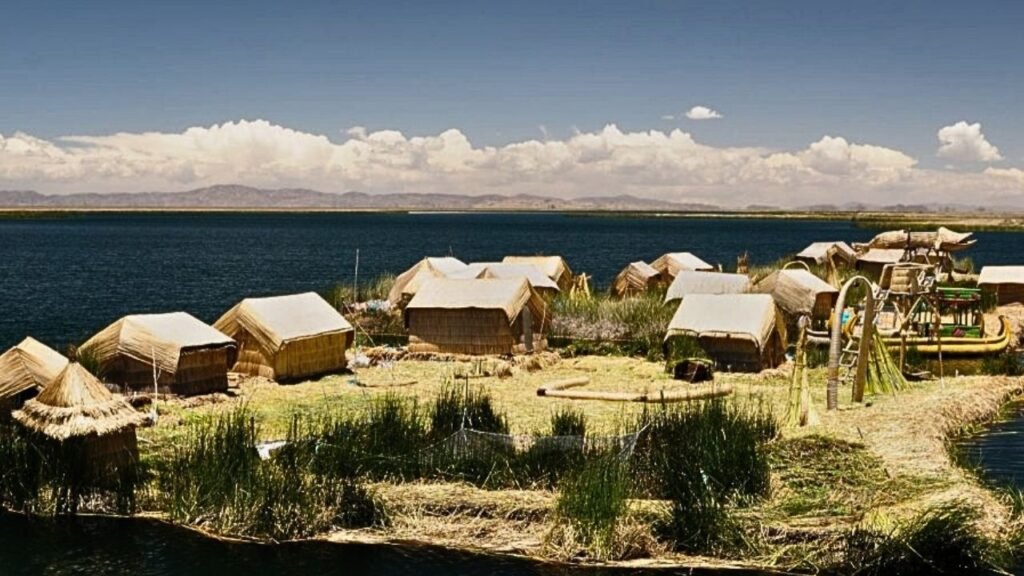
You normally think of an island as being a natural formation or one that’s been artificially created by moving hundreds of tons of rocks and sediment. But in Lake Titicaca in Bolivia, there are around 120 islands that are completely different. They belong to the Guru people, whose ancestors laid claim to the waters of the lake to help defend themselves and access remote regions for fishing. They built a series of floating islands from reeds. This method is still used to this day, and it’s amazing to see.
They begin by making boats from totora reeds and then collect further reeds and roots that are tied together by rope. By building them up layer after layer, the floating platforms are up to six feet thick and are anchored in position by being tied to eucalyptus poles that are buried into the lake floor.
The largest of the islands have room for homes of up to ten families and require a new layer to be added every few weeks to remain stable. The islands lasted for around thirty years before needing to be completely replaced and are still the main residences for several hundred people.
The surface of the island is soft, and with each step, you’ll notice your foot sinking a few inches. Unsurprisingly, they are now a popular tourist destination. Rather than working the lake for income, most residents now offer tours and lessons on how to prepare the reeds for construction.
02: Socotra Island in Yemen

Socotra Island has been called the closest place on Earth to what life would be like on an alien planet, and for good reason. Nestled within a four-island archipelago between the Garth Wade Channel and the Arabian Sea, it’s about 150 miles east of Somalia but officially part of Yemen. Unusually for an island like this, Socotra wasn’t formed by volcanic activity but instead is continental land that detached from the Gondwana supercontinent around 20 million years ago.
Because it has been separated from everywhere else for so long, it’s developed its unique flora and fauna, with 700 species that aren’t found anywhere else—a number that’s only eclipsed by New Zealand, New Caledonia, the Galapagos, and Hawaii. What’s different there, however, is the extreme heat and lack of moisture that everything has evolved to survive.
Possibly the most famous tree that’s endemic to the island is called a dragon’s blood tree, which looks like an umbrella shape and has a deep red sap that oozes out of it. Other unusual species include the cucumber tree, the psychotron pomegranate, and various types of aloe. Deep caves have some of the most impressive stalagmite and stalactite formations on earth, and some of the canyons and landscape look unlike anything you’ll find anywhere else—hence why it’s described as an alien island.
Animal life is also peculiar on Socotra and includes various endemic bird species, several reptiles such as skinks, legless lizards, a species of chameleons, and a few spiders, including a tarantula that’s only found on the island. There are also three unique species of crabs.
The island is designated as a UNESCO World Heritage Site, but it’s far more difficult to visit than any other due to its political affiliation with Yemen. It’s often reliant on donations from other countries to keep functioning. The communities that live on the island only have basic amenities; therefore, there is very little tourism activity, and for those who visit, there are no hotels and just a few guest houses to choose from.
Locals even protest and try to avoid the construction of new roads, despite the benefits they may bring, because of the damage they cause to the ecosystem. All this adds up to help keep the island’s unique appearance so well-preserved.
01: Madagascar Island
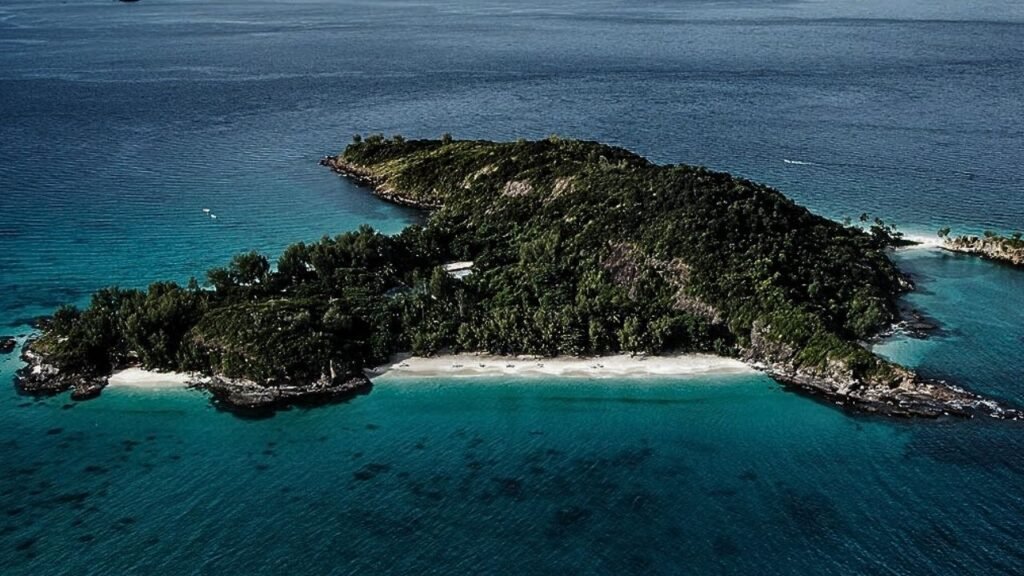
Madagascar lies around 250 miles off the eastern coast of Africa and is the fourth-largest island in the world. It separated from the Indian subcontinent approximately 88 million years ago, and as a result, has been isolated from the rest of the world. This isolation has allowed life to evolve in a different direction, leading to the creation of highly unusual geographical structures.
About 80 percent of the plant species there aren’t found anywhere else in the world, and the same is true for around 90 percent of the animals. There are forests of dry deciduous trees, ones of spiny trees, and even a large forest of sharp, jagged limestone structures that are unlike anything you’ll find elsewhere in the world.
The island’s position also makes it subject to unusual weather patterns, with warmer winds blowing across from the African continent that meet the cooler winds traveling over the vast emptiness of the Indian Ocean. If there’s ever a place to visit to see something different, Madagascar surely has to be it.

